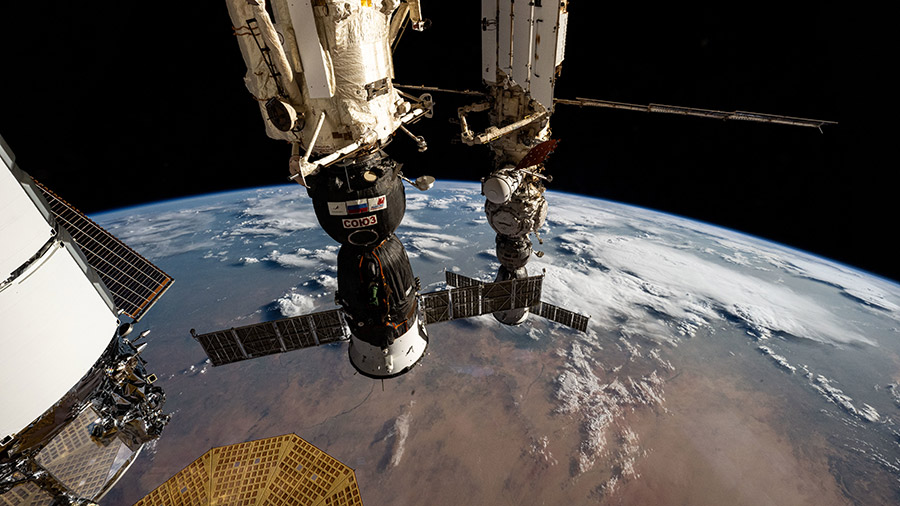Three Expedition 71 crewmates are in their final weekend aboard the International Space Station getting ready for a return to Earth. Meanwhile, the rest of the orbital residents were busy on Friday exploring how the human body adapts to weightlessness, manufacturing tools on demand, and running an educational robotics competition.
NASA astronaut Tracy C. Dyson is completing a six-month mission, while Roscosmos cosmonauts Oleg Kononenko and Nikolai Chub are wrapping up just over a year in low-Earth orbit. The Earth-bound trio is scheduled to depart the orbital lab inside the Soyuz MS-25 spacecraft at 4:47 a.m. EDT on Monday. At that time, Expedition 71 will end and Expedition 72 will officially be under way. The crew inside the Soyuz will parachute to a landing just over three hours later in Kazakhstan. NASA’s live undocking and landing coverage will stream on NASA+ and the agency’s website. Learn how to stream NASA content through a variety of platforms, including social media.
Microgravity research was full speed ahead at the end of the week despite the landing preparations as the rest of the crew conducted space biology and advanced technology investigations. Scientists can remotely monitor the experiments on the station or analyze the samples after they are returned to Earth to advance human health, space industries, manufacturing, household products, and more.
NASA Flight Engineer Mike Barratt spent his day exploring how living in space affects his cognition and vision as part of the CIPHER suite of 14 human research experiments. Barrat first took a test while practicing robotic maneuvers to measure any space-caused changes in his brain structure and function. Afterward, NASA Flight Engineer Jeanette Epps peered into Barratt’s eyes using medical imaging hardware looking for alterations in his eye structure and vision.
Epps also activated the AstroBee robotic free-flyers in the Kibo laboratory module and monitored as the toaster-sized robot assistants performed pre-programmed maneuvers designed by Asian college students. Algorithms were written to solve specific problems such as guiding the AstroBee to find a lost item in this robotics competition sponsored by JAXA (Japan Aerospace Exploration Agency) to inspire the next generation of engineers, scientists, and leaders.
NASA Flight Engineer Matthew Dominick spent his day on exercise research to learn how working out in microgravity affects the bones and muscles. Dominick performed squats, deadlifts, and heel raises on the advanced resistive exercise device as specialized cameras with motion detection systems monitored his workout. Doctors already know astronauts need to increase the intensity of exercise in space to reduce the rate of body mass loss. Now they are learning ways to maximize the effectiveness of a space workout to keep crews healthier on long-term missions.
The station’s newest trio, with NASA astronaut Don Pettit and Roscosmos cosmonauts Alexey Ovchinin and Ivan Vagner, was busy on Friday maintaining orbital lab systems and studying state-of-the-art technologies. Pettit inspected safety hardware documenting the condition, locations, and ID numbers. Ovchinin and Vagner investigated futuristic planetary piloting techniques then tested printing tools on a 3D printer. Fellow cosmonaut Alexander Grebenkin also participated in the futuristic pilot study. Both experiments are preparing crews for longer missions farther away from Earth.
NASA astronauts Butch Wilmore and Suni Williams started the day reviewing updated emergency procedures as they settle into a mission set to end in February 2025. Next, Wilmore assisted Pettit with the safety gear checks while Williams organized cargo inside the Cygnus space freighter.
Learn more about station activities by following the space station blog, @space_station and @ISS_Research on X, as well as the ISS Facebook and ISS Instagram accounts.
Get weekly video highlights at: https://roundupreads.jsc.nasa.gov/videoupdate/
Get the latest from NASA delivered every week. Subscribe here: www.nasa.gov/subscribe


